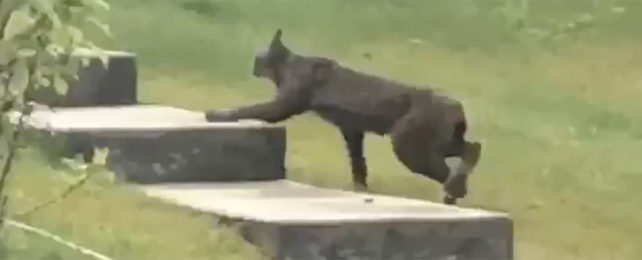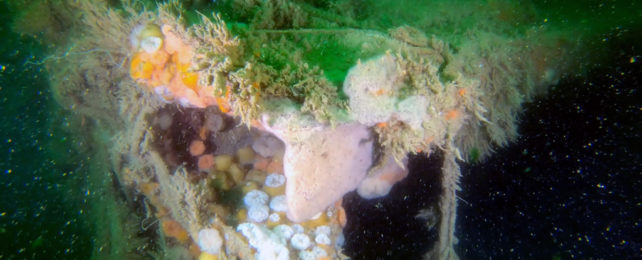CRYPTID
Black Canada Lynx Caught on Camera For The First Time, And There's Video
The smartphones in our pockets have changed our lives in a multitude of ways – not least because we always have a camera to hand to capture special occasions, strange events, and perhaps the occasional rare wildlife sighting.
On 29 August 2020, near the town of Whitehorse in Yukon, Canada, Thomas Jung – a wildlife biologist with the Government of Yukon's Department of Environment – saw a sight he knew few had ever witness before.
Luckily for us, he managed to quickly get his phone out and film it, giving the world a good look at a black-coated Canada lynx (Lynx canadensis).
The fur on these big cats is typically silvery gray in the winter, and a darker reddish brown during the summer months. The appearance of a black (or melanistic) Canadian lynx is therefore of great interest to experts.
"There are only a small number of records of coat color polymorphisms in the genus Lynx," writes Jung in his published paper.
"The adaptive significance of melanism in lynx is unknown, but the loss of camouflage when hunting during winter is likely maladaptive."
A black Canada lynx is going to have a much harder time blending in as easily when hunting prey like the snowshoe hare (Lepus americanus) – which, Jung speculates, might explain, likely explains why there aren't a lot of the cats with this color fur around.
Jung viewed the animal from a distance of around 50 meters (roughly 160 feet), which didn't seem too perturbed by the presence of people nearby. In the 30-second clip you can also hear a dog barking, which might be what eventually caused the big cat to slowly sneak away.
The brevity of the sighting means it hasn't been possible to run any detailed examinations of the lynx's coat color, beyond a few quick observations. Although the footage is rather shaky and pixelated, several experts have confirmed that the creature is indeed a Canada lynx.
"It had a black coat containing whitish gray guard hairs throughout, as well as whitish gray hairs in the facial ruff and the rostrum and dorsal regions," reports Jung.
Bear this in mind the next time that you're out and about with your smartphone: as well as snapping photos of the kids and the pets, you might also get the chance to record footage of an animal that's never been seen before.
While coat color doesn't usually vary much in the case of the Canada lynx, color variations in other species, including bears and wolves, can be incredibly diverse. As with the Canada lynx, it's thought that color ties into how animals hunt for food, or even provide advantages in cooling down or warming up.
Throughout the animal kingdom, camouflage and colors that blend in with the background can help in sneaking up on prey (or avoiding predators). Bright colors that stand out can help in attracting mates (or putting off predators). Sadly, color changes can also come about because of human activity too.
Keeping track of the range of colors possible in a population of mammals could have significance in predicting the way a species might react to changes in their environment.
"Indeed, with increased competition by coyotes (Canis latrans) a concern for Canada lynx encountering increasingly shallow snow as a result of climate change, the added disadvantage of lost camouflage to melanistic lynx hunting hares during winter would likely result in melanism being maladaptive," writes Jung.
The research has been published in Mammalia.

